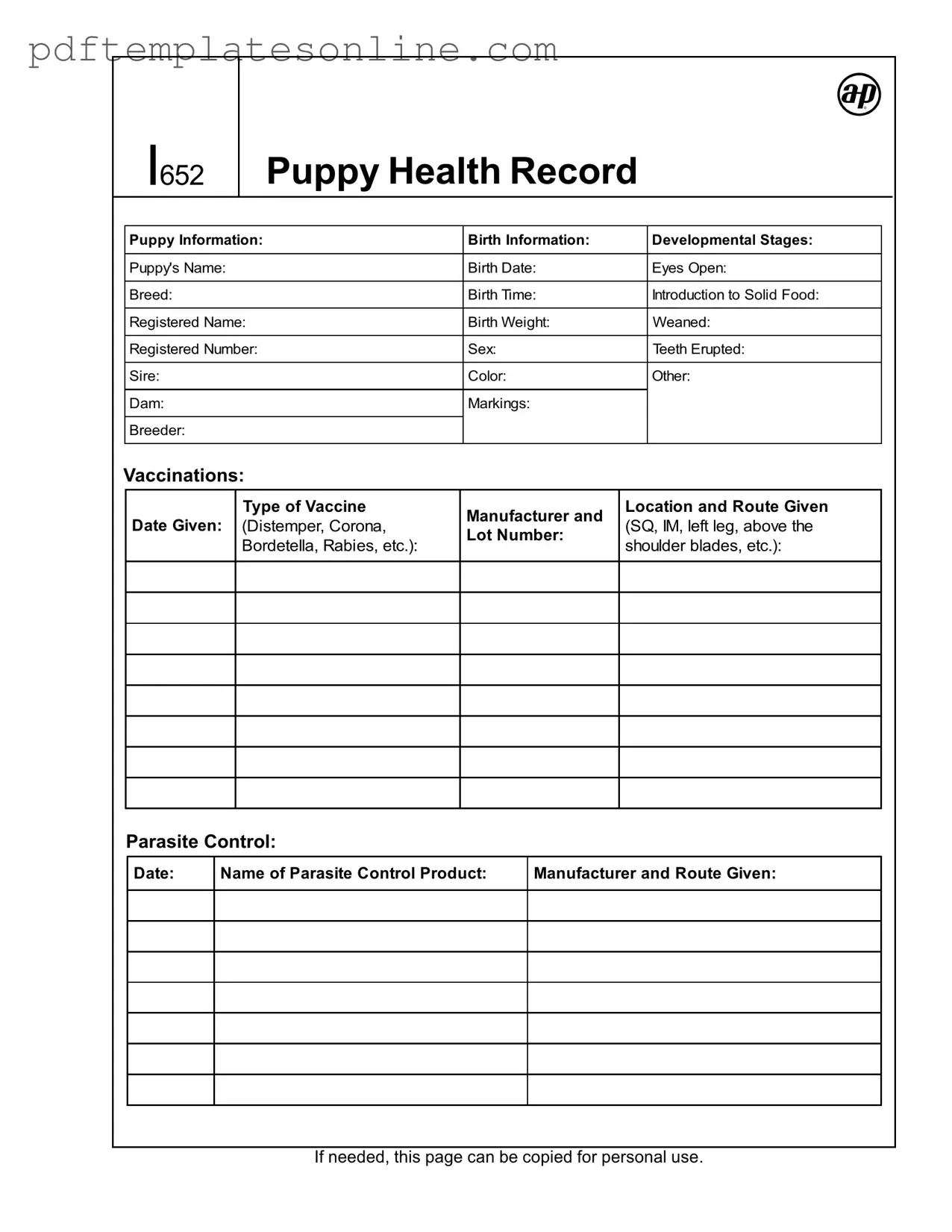Filling out the Puppy Health Record form can be straightforward, but several common mistakes can lead to incomplete or inaccurate records. One mistake is leaving out essential puppy information. This includes the puppy's name, birth date, and breed. Without this information, it becomes challenging to track the puppy's health history.
Another frequent error is failing to document vaccinations properly. Each vaccination should have a date, type, and manufacturer listed. Omitting any of these details can create confusion about the puppy's vaccination status, which is crucial for its health and safety.
Some people neglect to include the route of administration for vaccinations. Indicating whether a vaccine was given subcutaneously (SQ) or intramuscularly (IM) is important for veterinary reference. This information can influence future treatment decisions.
People often make the mistake of not recording parasite control measures. It’s vital to note the date and name of the parasite control product used. Missing this information can lead to gaps in the puppy’s health management, especially regarding deworming.
Another common oversight is not including the initials of the veterinarian or owner next to examination findings. These initials serve as verification of the information recorded and ensure accountability in the puppy's health care.
Some individuals fill out the schedule of events inaccurately. Each event, such as the introduction of solid food or spaying/neutering, should be logged with the correct age and date. Inaccuracies here can lead to misunderstandings about the puppy's developmental milestones.
Lastly, many people forget to copy the form for personal use. Keeping a personal record of the puppy's health is essential for future reference. Without a copy, important details may be lost over time, making it difficult to track the puppy's health history effectively.
